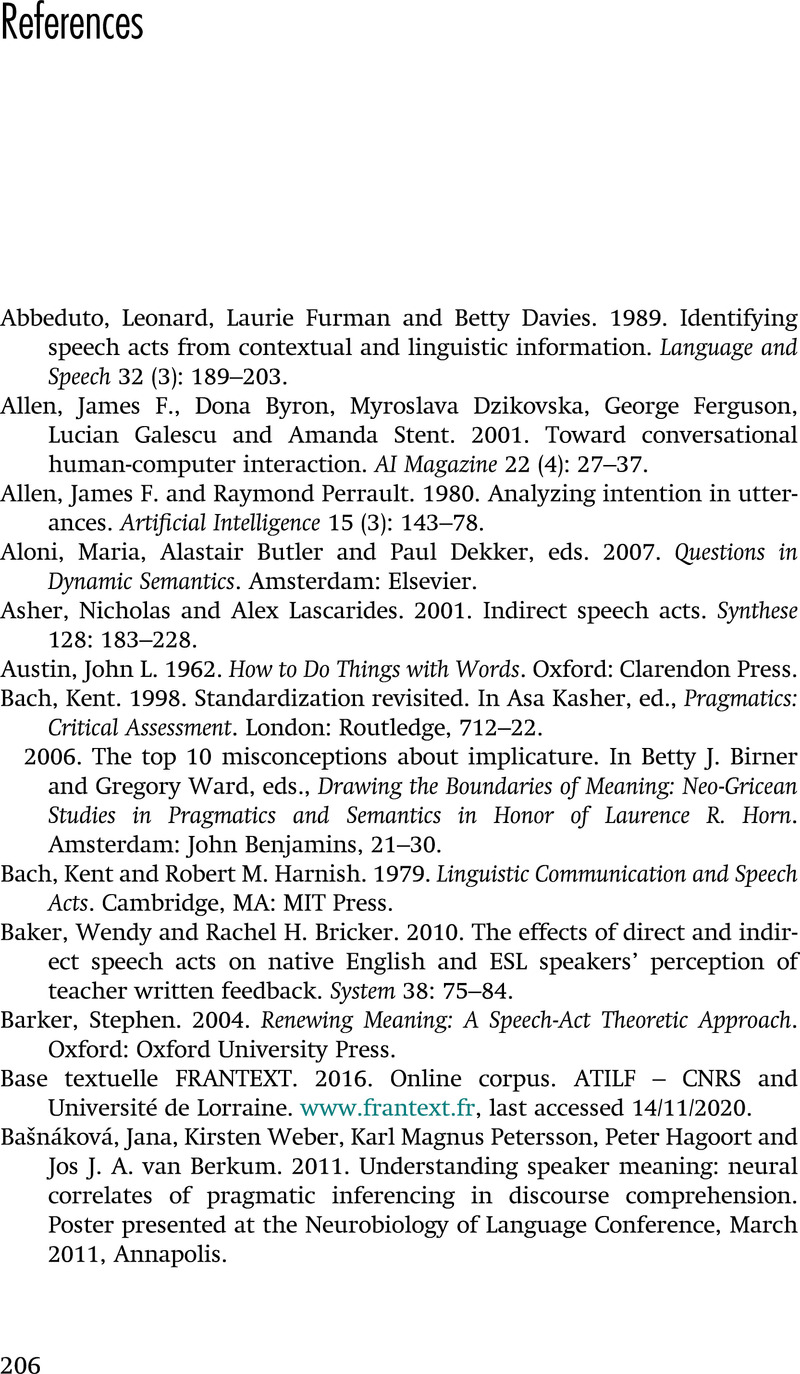Book contents
- Indirect Speech Acts
- Key Topics in Semantics and Pragmatics
- Indirect Speech Acts
- Copyright page
- Contents
- Acknowledgements
- Tables
- Figures
- Abbreviations
- Introduction
- 1 Classic Speech Act Theoretic Approaches
- 2 The Semantics of Sentence-Types
- 3 Cognitive and Relevance-Based Approaches
- 4 The Comprehension of ISAs
- 5 Indirectness, Politeness and the Social Context
- 6 Computational and Artificial Intelligence Approaches to Indirectness
- Conclusion
- Glossary
- References
- Index
- References
References
Published online by Cambridge University Press: 21 May 2021
- Indirect Speech Acts
- Key Topics in Semantics and Pragmatics
- Indirect Speech Acts
- Copyright page
- Contents
- Acknowledgements
- Tables
- Figures
- Abbreviations
- Introduction
- 1 Classic Speech Act Theoretic Approaches
- 2 The Semantics of Sentence-Types
- 3 Cognitive and Relevance-Based Approaches
- 4 The Comprehension of ISAs
- 5 Indirectness, Politeness and the Social Context
- 6 Computational and Artificial Intelligence Approaches to Indirectness
- Conclusion
- Glossary
- References
- Index
- References
Summary

- Type
- Chapter
- Information
- Indirect Speech Acts , pp. 206 - 220Publisher: Cambridge University PressPrint publication year: 2021

